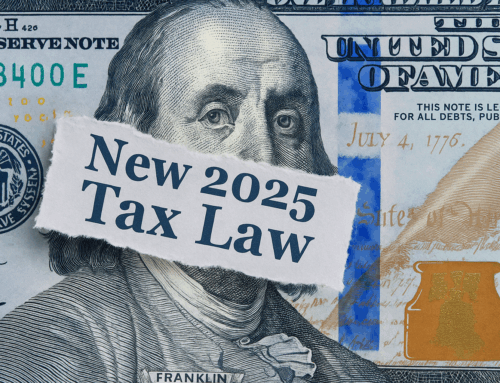New Rules for 529 Accounts: More Than Just College Savings

Introduction
529 plans have come a long way, from narrowly defined college savings accounts to truly flexible education savings accounts. In recent legislation, the tax-favored rules have expanded dramatically, allowing families to fund not only college but also K–12, vocational credentials, and even continued education for adults. The changes inject much-needed flexibility for families, especially those worried their 529 contributions would go to waste if a child didn’t attend college.
What Are 529 Accounts?
529 accounts—known legally as “Qualified Tuition Programs” are state‑administered savings plans designed to help individuals accumulate funds for educational costs. Managed by states (sometimes in partnership with financial services firms), these accounts allow contributions to grow tax-free, with withdrawals also largely tax‑free when used for qualifying educational expenses.
Originally intended exclusively for post-secondary education, starting in 2018, the law expanded to include up to $10,000 per year for K–12 tuition. Now, under the new legislation, 529s have become comprehensive education savings tools.
New Legislative Changes
The “One Big Beautiful Bill Act” (OBBBA), enacted in July 2025, significantly broadens the eligibility of 529 funds. Key updates include:
-
Doubling the annual K–12 withdrawal limit from $10,000 to $20,000 per student .
-
Expanding qualified K–12 expenses beyond tuition to include curriculum materials, online tools, tutoring, test fees (e.g., SAT/ACT), dual enrollment, and educational therapies for students with disabilities.
-
Permitting use of 529 funds for post-high school credential programs, including tuition, materials, exam fees, and continuing education required to earn or maintain credentials.
-
Making ABLE rollovers permanent, ensuring families supporting individuals with disabilities can smoothly transfer funds tax-free.
What New Programs Might Qualify?
529 funds can now support a broader array of educational paths and credentials:
-
Credential programs under the Workforce Innovation and Opportunity Act (WIOA).
-
State or federally recognized licenses.
-
Apprenticeship certificates and credentials from organizations like COOL/WEAMS.
-
Continuing education or certification renewals, such as licensing or credential maintenance.
These changes make 529 accounts more inclusive and functional for modern education and workforce development needs.
What New Expenses Now Qualify?
Under the revised rules, eligible expenses now include:
-
For K–12: tuition, curriculum, books, online tools, tutoring, test fees, dual enrollment costs, and educational therapies.
-
For credential programs: tuition, required materials, exam/testing fees, and continuing education/training costs.
-
ABLE rollovers: permanent, tax-free transfers of unused funds from 529 to ABLE accounts.
-
(Not covered in the earlier request but noted in related updates): rollover of unused 529 funds to Roth IRAs (via SECURE Act 2.0), subject to conditions.
New Rules for Elementary and High School
Starting 2026, families can use up to $20,000 annually from a 529 plan for K–12 expenses, doubling the previous cap.
Importantly, qualified expenses are no longer limited to tuition. Now eligible are learning materials, test fees, tutoring, dual enrollment, online resources, and therapies, expanding support for diverse student needs and educational settings.
When Do the New Rules Take Effect?
-
Most new provisions (broader K–12 and credential use) are effective as of July 5, 2025.
-
The $20,000 per year K–12 limit begins January 1, 2026.
-
Other enhanced benefits, including ABLE rollovers and credential funding, went into effect immediately upon the law’s enactment in July 2025.
State-Level Tax Conformity: Caveats to Consider
| State Conformity | Implication |
|---|---|
| Conforming States | Fully accept federal changes; K–12, credential, and therapy expenses are tax-free. |
| Non-Conforming States | Might tax K–12 withdrawals or not recognize therapy or credential funding. |
| Example: California | Penalizes K–12 withdrawals—a 2.5% penalty plus up to 13.3% state income tax on gains. |
| Rollovers Recapture | Some states reclaim previously claimed deductions or taxes on out-of-state transfers. |
Why These Changes Were Made
A major driver behind the update was widespread concern that 529 savings pledged for higher education could become “trapped” if a beneficiary didn’t attend college. Families feared losing tax benefits or being penalized for repurposing funds.
The new rules offer greater flexibility, allowing savers to support alternative education paths, like vocational training or continuing education, and to avoid waste or penalty when plans shift. This responsiveness aligns 529s more closely with real-world educational journeys and evolving family needs.
Disclaimer
This article is provided for informational and educational purposes only and does not constitute legal, accounting, or tax advice. Tax laws and state-specific rules regarding 529 plans vary and may change over time. Before making any financial decisions, you should consult with your tax advisor, accountant, or other qualified professional to determine how these rules apply to your specific circumstances.
This information does not constitute investment advice and is not an offer to buy or sell a security. The material is provided for general information and educational purposes and is based on information provided to us by sources deemed to be reliable. All expressions of opinion are subject to change without notice in reaction to shifting market conditions. Examples provided are for illustrative purposes only and not intended to be reflective of results you can expect to achieve. Past performance is no guarantee of future results and asset values will fluctuate with changing market conditions. There is no guarantee that the views and opinions expressed in this document will come to pass. Investing in the market involves gains and losses and may not be suitable for all investors. All investments are uninsured and can lose value.
McNeill Capital, LLC (MC) is a registered investment advisor. Reference to registration does not imply any particular level of skill. MC does not provide tax or legal advice. MC is not an attorney. Estate planning can involve a complex web of tax rules and regulations. Consider consulting a tax or legal professional about your particular circumstances before implementing any tax or legal strategy. The information provided here is of a general nature and is not intended to address the specific circumstances of any individual or entity. In specific circumstances, the services of a professional should be sought.
©2025 McNeill Capital, LLC






